Safety
procedures for harvesting small grains have unique concepts
that must be learned and followed in order to ensure a safe
and productive harvest. Every year new safety devices and
procedures are developed to make combines and other equipment
safer to operate. However, responsibility for safety remains
with the operator. Each operator must be aware of hazards
and remain alert to situations that are potentially dangerous.
|
|
|
| Safety
Before Starting Before attempting to start the combine the first time each season, study the operator's manual. It has operating information and specific safety recommendations for that particular machine. Regular maintenance is important. Clean the combine to remove trash around the exhaust system, which can cause fires. Tools and debris on the platform or in the cab can lead to injuries from slipping or tripping and falling. Open the doors of the machine shed if the combine has been stored inside. This will prevent fumes from injuring workers. Check tire pressure each day. Under-inflation can cause the tire to fail. Over-inflated tires can cause more "bounce to the ounce" resulting in loss of control. Check the brakes once a week. With hydraulic brakes, make sure the master cylinder is full and not leaking and that no air is in the lines. Check the cylinder rocking bar to see if it is clear of the cylinder. Make sure all shields are in place. Always use the hand rails for mounting and dismounting. |

|
| Starting
the Combine Before mounting the combine, make sure everyone is clear. Even after getting into the operator's seat, open the cab door and shout, "is everyone clear," and wait for a reply if you are working with some-one. Do not allow extra riders on the machine with you. Before starting the combine: sound the horn (if it is equipped with one), disengage the header drive, disengage the separator drive, place the gearshift in neutral and depress the clutch pedal. Because starting fluid is extremely flammable you need to be careful if using starting fluid on diesel engines. |
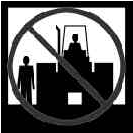
|
| Operating
Safety Combine operation requires constant attention by the operator. Never operate the combine in poor health or if you are sleepy. Keep alert at all times. Wear proper protective equipment and clothing, such as appropriate footwear. Check the field before harvesting for ditches, debris, fences, bank overhangs, and other obstacles. Be aware of the weather conditions. Slow down when operating or turning on hillsides, and avoid sharp turns. Slow down when you have a full grain tank. This makes the combine top heavy and more subject to rollovers, especially if grain tank extensions are used. Always sit down when operating a combine, especially over rough ground. Be careful when activating the leveling devices on a hillside combine. When using the brakes to make sharp turns, slow down and always turn the steering wheel before applying the brakes to assist turning. Failure to do so can cause the combine to swerve and turn dangerously. |
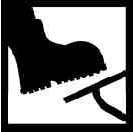
|
| Field
Repair and Maintenance Safety Always keep the machine clean to prevent fires and falling. Before doing any repair or servicing on the combine, turn off the engine, disengage all drives, and wait for any moving parts to stop completely. Never try to unclog a machine when it is still operating or moving. Stay clear of all moving parts. Corn headers can pull material 12 feet long through in one second-faster than you can let go. Wear protective gear and clothing: ear plugs, eye protection, head protection, and proper fitting clothing and footwear. Use proper lifting techniques when lifting heavy parts. When working on the header, block it up with supports. Never rely on the hydraulic system alone to hold the header up as it may fail. Use secure supports when working on any part of the combine that can move or fall. Keep all shields and safety devices in place and in proper operating condition. Keep all belts, chains, and other adjustable items aligned and in good condition. Install a spark arresting muffler when operating in dry fields. Avoid sparks or flames when working on the battery. The hydrogen gas emitted by the battery may explode. |
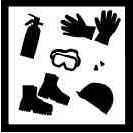
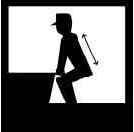
|
| Refueling
and Fluids Always try to refuel outside of the field. Do not smoke or allow any flames nearby when refueling. Allow the combine to cool before refueling. This includes the engine, the cooling system, and the exhaust system. High-pressure fluid leaks in the hydraulic or diesel fuel system are extremely dangerous. The leaks can be small and not seen and can penetrate the skin. When checking for leaks, use a piece of stiff paper, cardboard, or wood. If injury does occur, seek medical help immediately. Always carry a first aid kit. Keep at least one 2A 10BC Dry Chemical Fire Extinguisher on the combine at all times. |
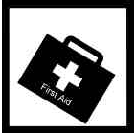
|
| Stopping
the Combine Safely Disengage all headers, drives, and put gear shift in neutral. Lower the header. Apply the parking brake. Remove the ignition key to prevent accidental starting or to prevent tampering, especially when working on the machine or when it is parked. The hydrostatic drive unit is not an effective parking brake. |
|
| Transporting
the Combine For long distances, haul the combine on a flatbed truck or trailer. When towing a combine make sure the load is secure. Slow down; be aware of the dangers of driving in towns, narrow roads, bridges, under low bridges, low power, or telephone lines, and adjust for general weather and road conditions. When driving the combine on roads, use the flashing lights, rear tail lights, slow moving vehicle signs, and headlights and have a pilot car in front and back with flashing lights. Always lock the brake pedals together to ensure adequate, even braking. Be careful when applying brakes if the header is still attached. The added weight of the header could cause the machine to tip forward and even crash into the ground or preceding vehicles. Put the unloading auger in the transport position, making sure it does not interfere with the safety lights. On self-propelled combines , never use the header safety support when transporting the machine. Raise the header enough for safe ground clearance, but not high enough to reduce visibility. On pull-type combines , always use the header support when transporting the machine. Slow down when making turns, always plan your route and know where there may be dangerous corners or poor visibility. Never coast downhill; go down hill in the same gear with which you used to go up the hill. When the combine is moving, you cannot shift it back into gear. Always maintain control of the machine. |
|
| Safe
Towing Never tow the combine at speeds higher than 20 mph. Always keep the transmission in neutral or the "tow" position if the combine is so equipped. Never tow a combine equipped with hydrostatic drive since towing can cause damage to the drive unit. |
|
| General
Safety Reminders 1. Know your machine! Take time to review the operator's manual before the harvest season. 2. Keep alert! Get plenty of rest at night and take frequent rest breaks during the day. 3. Prevent fires! Keep the combine clean and refuel the machine after it has cooled off. Keep a fire extinguisher on hand. 4. Wait! Make sure all moving parts are stopped before working in them. Replace all shields. 5. Be aware! Know the conditions of the field you are operating in. When on the road turn on the warning lights and be aware of traffic approaching from the front and rear. Before starting or moving the machine make sure everyone is clear. |

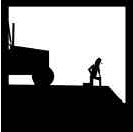
|
Written by Tom Karsky,
University of Idaho, and A. K. Jaussi, former graduate assistant,
Washington State University. For more information about farm
safety, please contact:
| Published December 1998 | Harvesting Hay and Forages | Farm Safety Series PNW 512 |
Disclaimer and Reproduction Information: Information in NASD does not represent NIOSH policy. Information included in NASD appears by permission of the author and/or copyright holder. More